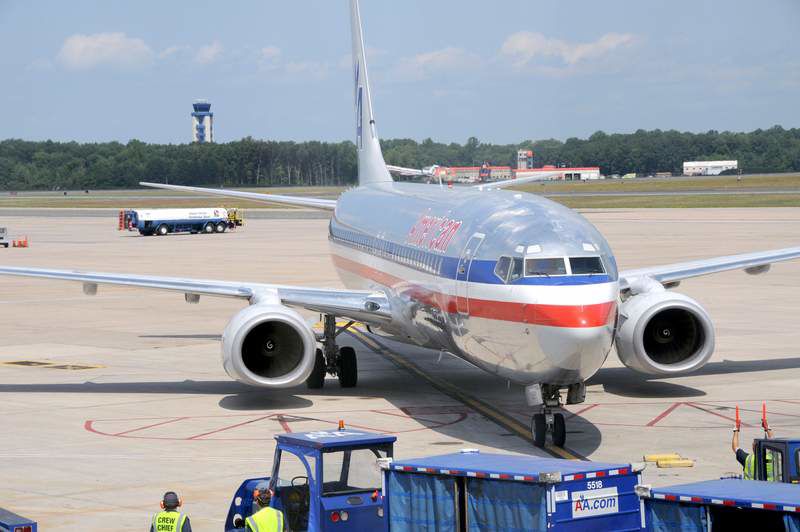American Airlines flight helps usher in satellite-based approach technology
Published 5:00 am Friday, August 27, 2010

- American Airlines flight 1916 arrives at Bradley International Airport in Hartford, Conn., on Thursday. It was the first commercial airline flight in the U.S. to use a satellite-based approach, called required navigation performance, instead of the traditional ground-based radio and radar equipment.
Portable global positioning system devices that let travelers know precisely where they are and, more important, direct them to where they want to go, have been around for years. But airline pilots in the United States often must still rely on antiquated ground-based radio and radar equipment to land at airports.
So when American Airlines Flight 1916 followed a satellite-based approach to Bradley International Airport near Hartford, Conn., on Thursday afternoon, it was a momentous occasion, at least according to the pilot.
“This is really good stuff,” Capt. Brian Will told a small group gathered at the terminal to celebrate the flight, which originated in Dallas.
Airliners have been able to plan and execute GPS approach routes for about 15 years. Since 2005, the Federal Aviation Administration has authorized satellite-based approaches — called RNP, or required navigation performance — at more than 100 airports under its plan to modernize U.S. airspace by 2025.
The fact that the American air traffic infrastructure is so well established is one reason progress is slow.
“We’re in transition from ground-based to aircraft-based systems,” said Steve Fulton, an executive with the aviation navigation company Naverus.
“You have to continue to operate the airspace while you’re improving it, while you are upgrading it,” Fulton said. “We don’t have the luxury of flipping a switch overnight and all of a sudden we’ve got a new one.”
But airline officials say progress has been too slow. American, Southwest, Alaska Airlines and others have trained their pilots to fly RNP procedures, and about 80 percent of U.S. airliners have the equipment to do so, the FAA says. Still, the approaches are in use at only a small fraction of American airports. Their use abroad varies from country to country.
Because RNP landings are so precise, they are considered safer, and because they can cut miles from the approach route, they are more economical, too.
Whether the Bradley Airport gamble will pay off with an FAA contract to do more approaches is unclear. But after four years of planning, and an evening in the American Airlines simulator practicing the approach the night before the flight, Will could not set the Boeing 737 down on Runway 15 as planned. Tail winds of 20 mph required that he land from a different direction.
He dismissed the last-minute change with a shrug. “From flying a very scripted GPS high-navigation-accuracy approach to this runway, we turned around and I hand-flew,” he said.






